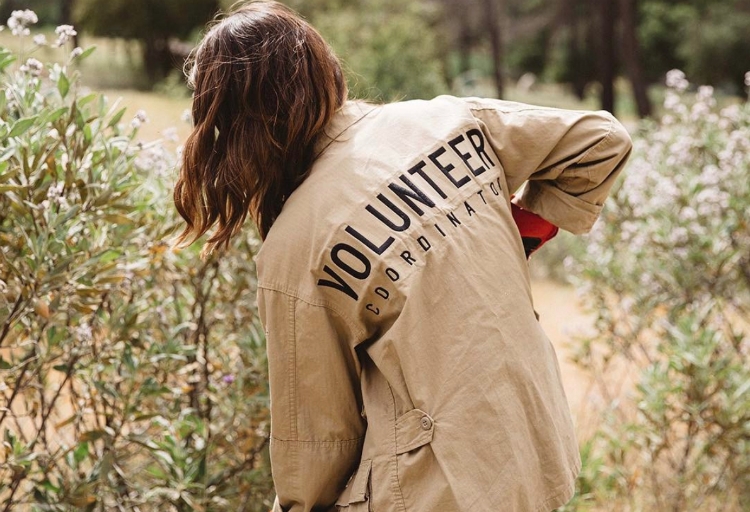In this day and age, you would be hard-pressed to come across a marketing or business conversation which doesn’t involve millennials. Why is that? Why are millennials so important?
First, they are extremely technology-savvy, which means they can be found on just about any social media platform online. Second, since they were born between 1980 and 2000, they are now in a position to spend their money, and spend more than any other generation. However, millennials are also a picky bunch.
They have seen everything when it comes to sales and advertising. This means that the usual methods won’t work on them, and that they prefer brands which can provide them with a more personal experience, as well as responsive customer support. If your target audience is millennials, it is no longer enough to offer a great product at a decent price. You need to go the extra mile to increase their loyalty. How do you do that? By checking out the following six tips:
1. Be There for Them on Mobile
According to stats, 92% of millennials own a smartphone. This, along with the number of hours they spend on mobile devices, puts them at the top of the list of mobile-first internet users. But how does that tie into the whole customer loyalty thing? Well, as we have mentioned before, millennials are extremely shopping-savvy, which means they will spend hours online researching the products or services they are interested in. And the same thing happens when they visit actual physical stores, only they are using their smartphones to do the research.
Make it easier for them to research your brand online by offering better mobile websites and apps. You can even take it up a notch and do what Sephora has been doing with its Virtual Artist app, which not only allows shoppers to see what Sephora’s products would look like on a human being, but also enables them to purchase items from inside the app. According to Resumewriters and Bestessaywriter research, It’s a great example of providing an outstanding customer experience, and you should follow it, whether you are selling apparel or software.
2. Reward Your Millennial Customers
One of the best ways to get on the good side of your millennial customers is to reward them with offers, deals, and discounts. For instance, 71% of smartphone users in the US between 18 and 29 years of age shared their location with a business, just because they would receive deals and offers. Now, simply establishing a reward program may not cut it, because you need to come up with one that is going to resonate with your millennial audience and keep them around. In other words, giving them a discount on their first purchase might not do anything for their loyalty. However, the opposite will be true if you build your loyalty program around actions and behaviours which occur after the purchase.

The most beneficial way to implement a rewards program would be to reward behaviours such as referrals, brand advocacy, social media sharing, and user-generated content. Another study which proves the effectiveness of reward programs was done by Berkeley Research Group, which covered 1,026 US-based internet users ages 18 and older. The results showed that 55% of them decided which mass-market retailer they wanted to shop at during the holiday season based on the type of reward programs those retailers offered to their customers. 48% of them had a similar approach regarding department stores, and 43% of those that took part in the survey chose electronics retailers based on their reward programs.
And while you may think that this will set your business back a lot, consider the fact that millennials are more willing to buy things they don’t really need, just so they can collect rewards and loyalty points, and then use them later for something that they really need. For instance, Marvel has come up with a reward program which allows customers to rack up points through interactions with its brand, such as sharing on social media, commenting on posts, or even watching their trailer and promos. After enough points are collected, they get stuff like DVDs, t-shirts, posters, toys, pins, and comic books.
3. Avoid Traditional Advertising Methods
Your average millennial comes across thousands of ads on a daily, most of which they ignore. They have heard all pitches in existence, and they are tired of being sold to. But, there are still plenty of ways in which you can engage them, get them interested in your products or services, and increase their loyalty. For example, you may want to implement a referral program, which rewards those followers which share your brand and its offers with their family and friends. Naturally, millennials, like everyone else, are more inclined to trust their loved ones than some corporate entity. You can take it one step further and reward those that have made their first purchase thanks to a referral.
Another option would be to get influencers to act as your brand’s ambassadors. Again, millennials are more likely to trust someone who is more like them, and who comes across as genuine. Nike did that exactly that when they started a collaboration with some of the most popular YouTube influencers, which resulted in millions of new subscribers. And the same goes if you are running a small or medium-sized business. In order to establish your brand or your line products, you need social proof, and the most efficient way to obtain it would be to start a collaboration with some of the influencers in your niche. And while that might cost you money, keep in mind that most micro-influencers probably charge less than you would spend on ad campaign which might not yield the desired results. Plus, influencer marketing is growing fast, and you want to get in on it as soon as possible.
4. Nurture Their Individuality
Even though millennials aren’t averse to sticking to brands they like, they don’t want their choices and purchases to define them. Instead, they like to strive toward being unique and setting trends themselves, instead of following them. But how do you make them feel special if they are purchasing the same product as thousands or even millions of other millennials? Well, even though they might buy the same items, how they use them differs from person to person. It’s an opportunity for you to feature user-generated content that revolves around your products. That way, your brand receives social validation which is worth way more than industry reviews, and your millennial customers get to feel special and validated as well.
One of the best examples of catering to the individual needs of their millennials customers is Coca Cola’s “Share a Coke” campaign, which had the company swapping out their legendary logo with 250 of the most popular names in the US. Needless to say, it was a smash hit, and it helped Coca Cola increase the sales of their soft drinks in the US by 2%, which is huge, considering how much they sell in the first place. Now, what Coca Coca did right here is to give their customers a customized product. Sure, they didn’t cover all the names, but even those Coke drinkers whose names didn’t wind up on customized bottles had friends and family members whose names did, so they were more than ready to buy them anyways.
And the campaign spread on social media like wildfire, because Coca Cola encouraged people to create content and use the branded #ShareaCoke hashtag. Over 500,000 images ended up being posted on social media, and needless to say, it reached pretty much everyone it needed to reach, and because it was user-generated content, Coca Cola didn’t spend much on marketing either. And they continued the campaign by introducing names and terms that anyone could identify with, but which were still customized, such as “BFF” or “Bestie”.
5. Give Them a Cause to Get Behind
Let’s be honest here: running a business is all about making a profit. However, that doesn’t mean that you can’t or shouldn’t do anything beyond making money. One of the ways to get more people to align with your brand would be to support a certain cause or a purpose. For example, you might point out that your products are sustainable, or that a certain amount from each purchase of your product will be donated to a good cause or a charity organization. If you think this might not be as important, let the fact from UK Essay that 39% of millennials research company sustainability efforts before making a purchase sink in.

A wonderful example of companies which support great causes is Love Your Melon, which creates apparel such as beanies, hats, headbands, socks, and blankets. But, what has made them unique is that they’ve started donating beanies to children battling cancer. Once they’ve surpassed their goal of 45,000 beanies over 18 months, they have set a new one of donating $1 million dollars to pediatric cancer research. So far, the company has given away over $4.3 million and 125,000 beanies. According to its founder, Zachary Quinn, Love Your Melon gives away 50% of net profit to non-profit organizations whose goal is to fight pediatric cancer.
This cause has obviously struck a chord with a lot of people, because it something humane, real, and meaningful. Actually, it is something that can make a real difference in someone’s life. And it especially resonates with those customers which are cancer survivors or which have, or have had, a family member battling the same illness.
6. Build a Community for Them
Another way to create a deeper connection with your customers and inspire their loyalty would be to build a community around your brand or product. If you are thinking that that is something reserved for brands which have already established themselves, think again. Literally any kind of brand, company, or a small ECommerce business can start a community.
For instance, if you are selling cameras and camera-related gear through your online store, you can encourage your customers to share the photos and/or videos they have created with your products. This way, you are not only creating buzz around your business, but you are also encouraging your customers to indulge in their hobbies and giving them support to keep on getting better.
For instance, Sigma Beauty has done a great job of motivating their customers to create content by featuring it on both Instagram and their official website, which provided both regular customers and aspiring make-up artists with a chance to promote their work in front of a large audience. They even introduced branded hashtags such as #SIGMABEAUTY and #SIGMABRUSHES. As a result, their on-site engagement has quadrupled, and they have started to receive as many as 16 thousand user-generated images on a monthly basis. This just goes to show how much millennials want to be a part of those brands they like. Showing a little appreciation for their content can go a long way.
And it doesn’t just have to be make-up or photography. You can pretty much build a community around any product. You have an online store which sells woodworking tools? Great! Encourage your customers to share their finished products on your social media or by using a branded hashtag which you have created for them. That way, you are not only getting free content and growing your community, but you are also providing support and getting your customers’ work in front of a larger audience, which could really change things for them in terms of success.
Conclusion
These six tips will help you retain your existing customers, whether they are millennials or not. Anyone can get behind a brand that offers great deals, rewards, good products, and raises money for a good cause. So, start building a relationship with your customers today and reap the benefits for years to come. Good luck!


